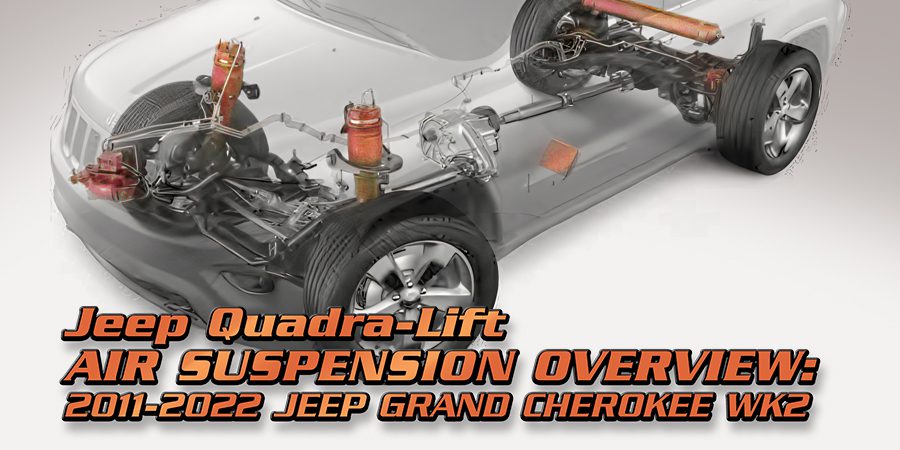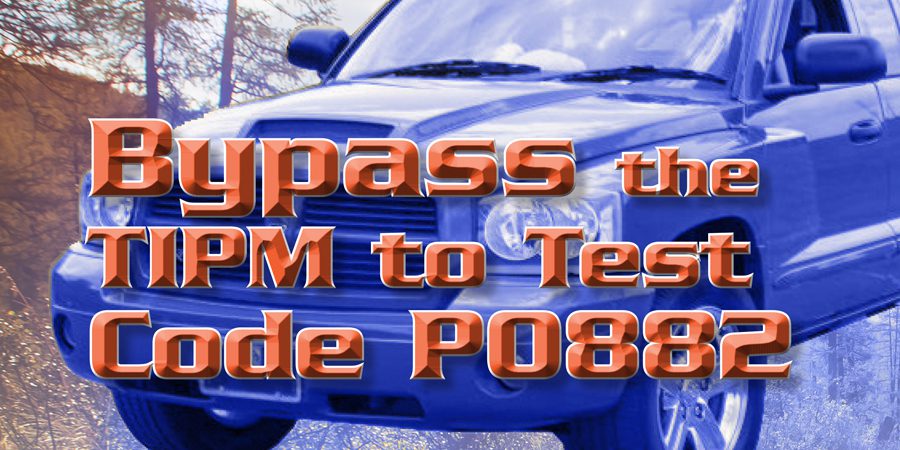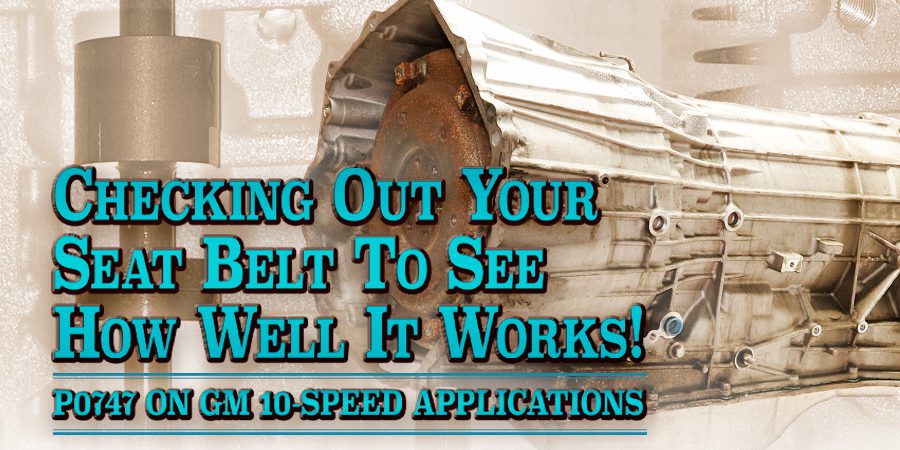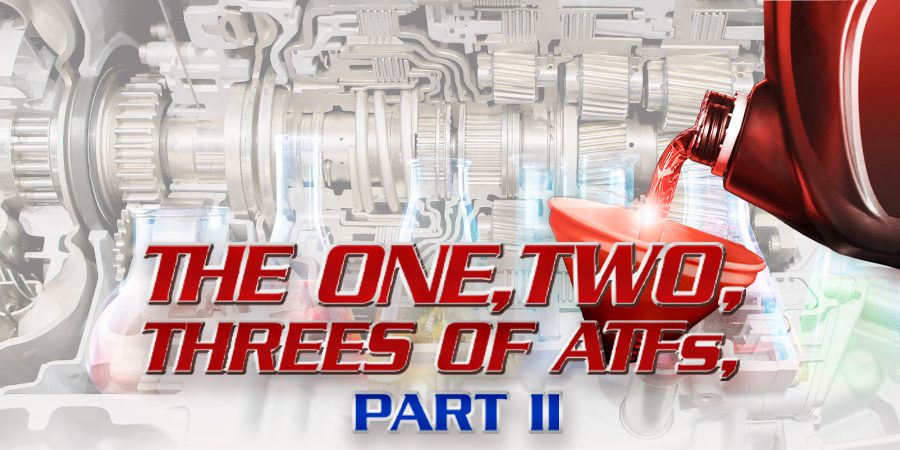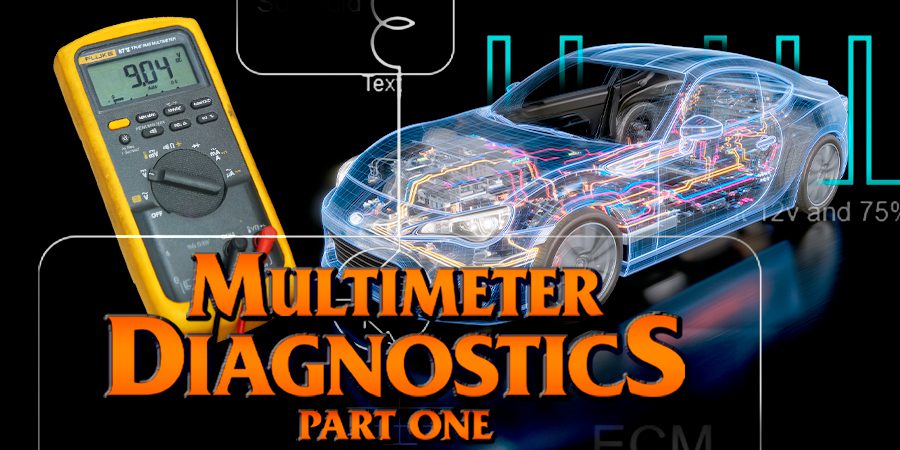Over the years, Jeep has gained a reputation for building capable and rugged off-road vehicles. The use of air suspension systems has become increasingly popular among various manufacturers in recent times, with Jeep introducing its own system designed to maintain on-road comfort while also handling challenging off-road terrain when necessary.
The Quadra-Lift system was introduced in 2011 for the WK2 Grand Cherokee as an alternative to the standard coil spring setup and uses a few different components integrated via the Air Suspension Control Module (ASCM, Figure 1) to operate.
- Front air struts (Figure 2)
- Rear air springs (Figure 3)
- Front and rear height sensors (Figure 4)
- Air reservoir tank (Figure 5)
- Air compressor and valve block (Figure 6)
- Selec-Terrain selector (Figure 7)
The ASCM controls the system with inputs not only from the air suspension system, but also from modules such as the ABS, PCM, and steering, via the CAN BUS network, to maintain ride stability. Ride height is monitored by the ASCM using height sensors located on all four corners of the vehicle and can be adjusted manually using the Selec-Terrain control panel or automatically by the ASCM when Auto mode is selected.
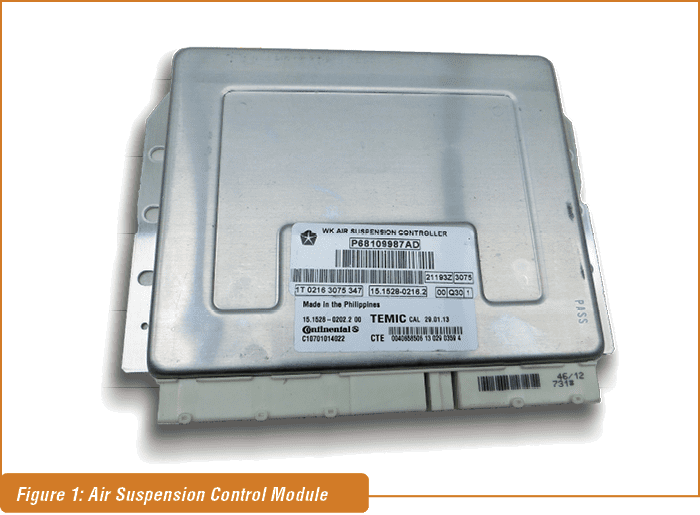 To allow the vehicle to raise and lower, air springs are fitted instead of conventional coil springs – the front units feature air spring and shock assemblies, while the rears are fitted with air springs and a separate shock setup. The Quadra-lift is a closed air system and only allows fresh air to be drawn via the compressor when there is a loss of air pressure in the system. During normal operation, the pressurized air can be directed to any corner of the vehicle by the valve block assembly located within the compressor, which the ASCM controls. The ASCM operates by closing and opening the appropriate valves connected to each air spring and the reservoir tank.
To allow the vehicle to raise and lower, air springs are fitted instead of conventional coil springs – the front units feature air spring and shock assemblies, while the rears are fitted with air springs and a separate shock setup. The Quadra-lift is a closed air system and only allows fresh air to be drawn via the compressor when there is a loss of air pressure in the system. During normal operation, the pressurized air can be directed to any corner of the vehicle by the valve block assembly located within the compressor, which the ASCM controls. The ASCM operates by closing and opening the appropriate valves connected to each air spring and the reservoir tank.
NOTE: The compressor assembly is not designed to fill the system if air pressure is lost. 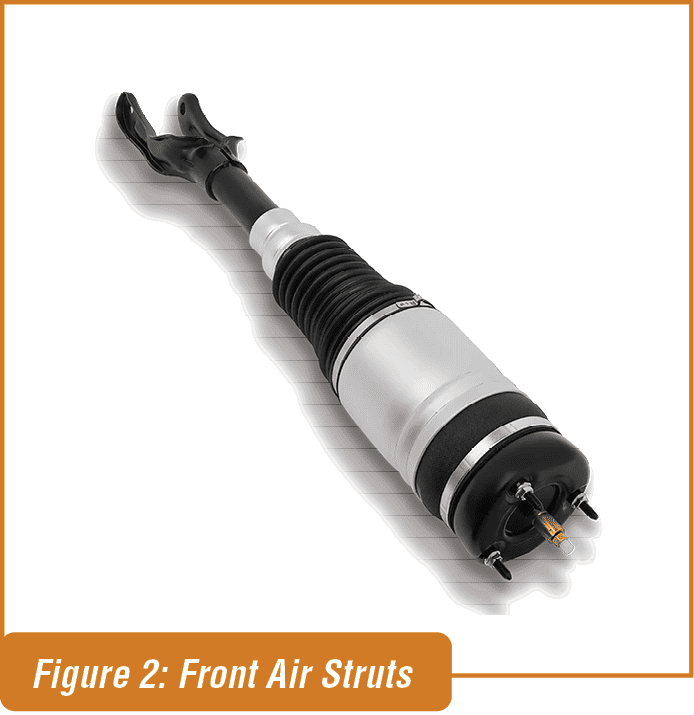 The system must be recharged with Purity Class 5 Nitrogen using a diagnostic tool and OEM special tool 10247B.
The system must be recharged with Purity Class 5 Nitrogen using a diagnostic tool and OEM special tool 10247B.
MANUAL CONTROL
In manual control, there are five height presets (Figure 8) that can be selected using the suspension up and down buttons: Normal Ride Height (NRH), Off-Road 1 (OR1), Off-Road 2 (OR2), Aero mode, and Park mode.
When moving between different heights, the cluster will indicate whether the vehicle is moving up or down, along with the LED indicator on the selector, which indicates the position change. Once the ride height has been reached, the cluster will then indicate the new ride height. 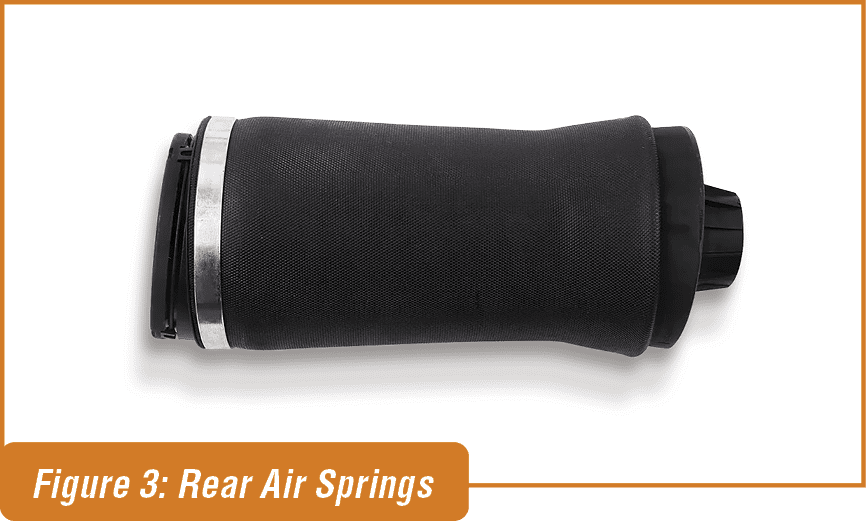 To prevent projection of the headlight beams beyond the set height, the rear springs will always be raised before the front struts; however, the front struts will always be lowered before the rears when a lower ride height is selected.
To prevent projection of the headlight beams beyond the set height, the rear springs will always be raised before the front struts; however, the front struts will always be lowered before the rears when a lower ride height is selected.
AUTOMATIC CONTROL
For Auto mode, there are five presets and can be selected on the Selec-Terrain dial: Auto, Sport, Snow, Sand/Mud, and Rock.
When a preset is selected, systems such as the ABS, transmission, and transfer case can be controlled in conjunction with the air suspension to offer the best vehicle performance.
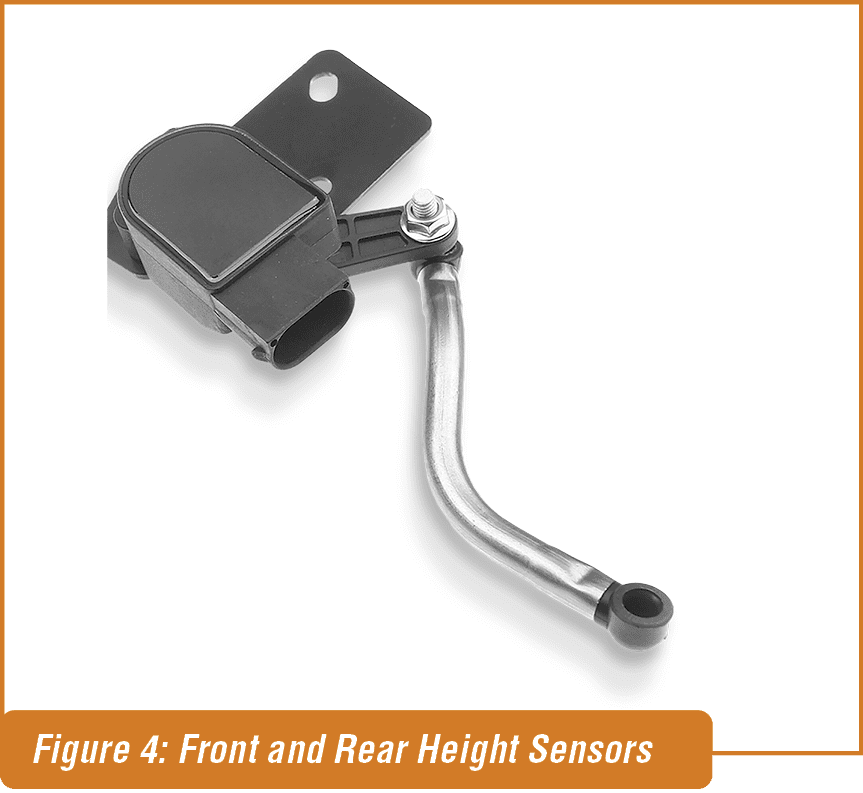 Auto mode sets the vehicle at NRH in 4WD HIGH mode. When in 4WD LOW, the vehicle will raise to 38mm over NRH while the transfer case locks and turns the shift mode into off-roading mode.
Auto mode sets the vehicle at NRH in 4WD HIGH mode. When in 4WD LOW, the vehicle will raise to 38mm over NRH while the transfer case locks and turns the shift mode into off-roading mode.
Sport mode lowers the vehicle ride height by 15mm below NRH and is selected for higher-performance driving.
The stability control and traction control settings are relaxed, allowing slightly more wheel slip from the ABS. The transmission shift times are also reduced. Sport mode can only be engaged in 4WD HIGH mode.
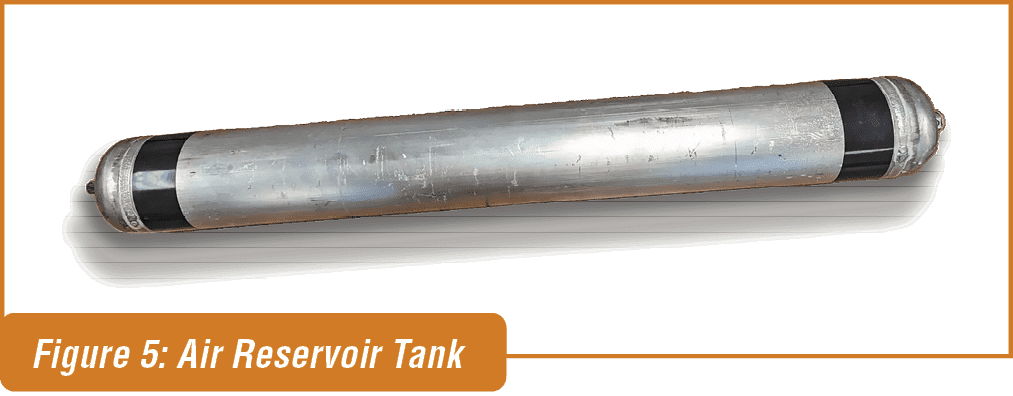 Snow mode in 4WD HIGH will maintain the vehicle at NRH. Traction control minimizes wheel slip, allowing the vehicle to take off only in 2nd gear. 4WD LOW raises the ride height by 33mm over NRH and engages off-road settings by locking the transfer case, adjusting transmission shifts, and ABS intervention.
Snow mode in 4WD HIGH will maintain the vehicle at NRH. Traction control minimizes wheel slip, allowing the vehicle to take off only in 2nd gear. 4WD LOW raises the ride height by 33mm over NRH and engages off-road settings by locking the transfer case, adjusting transmission shifts, and ABS intervention.
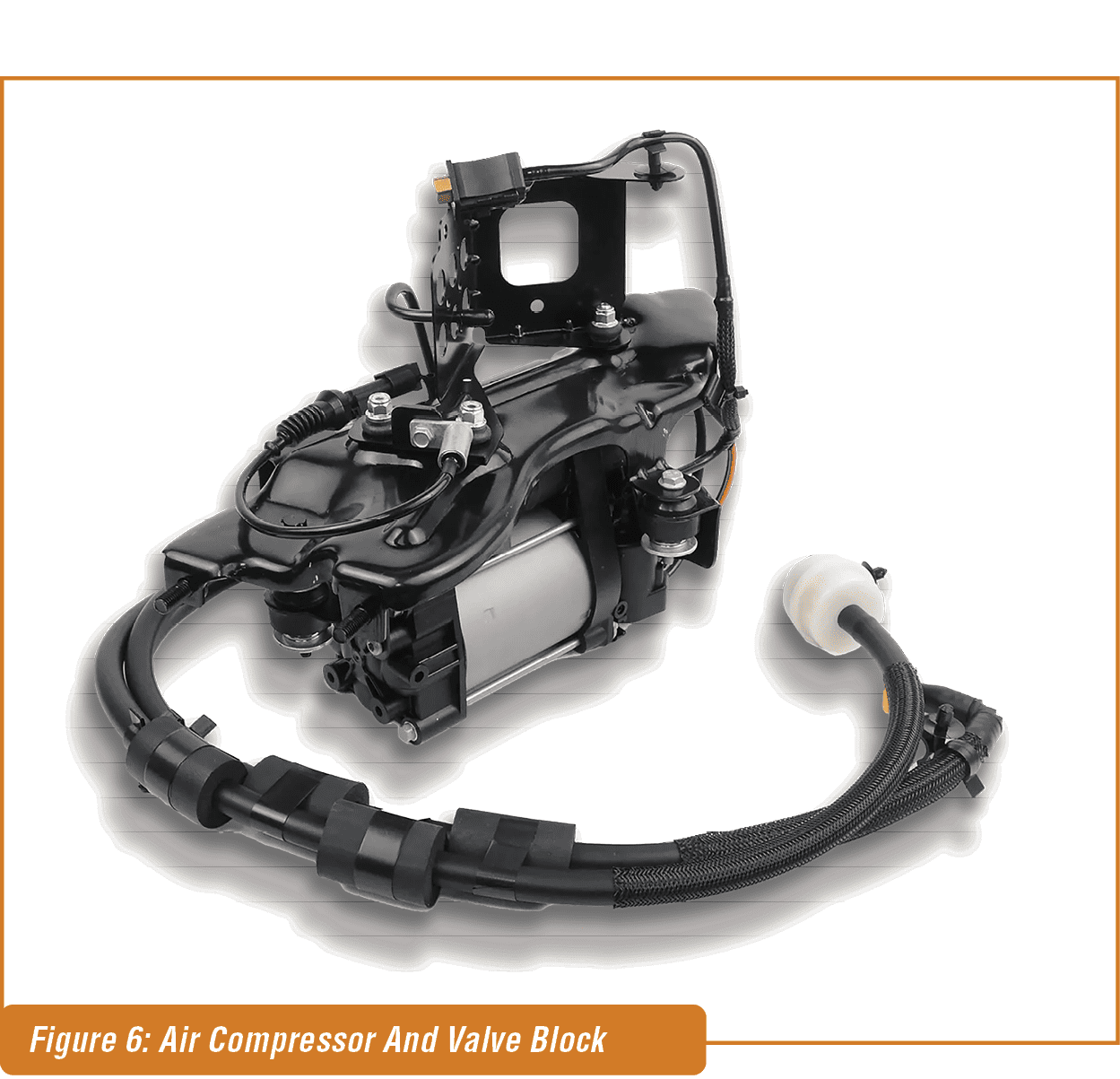 Sand/Mud mode raises the vehicle by 38mm above the NRH, with the ABS limiting the amount of wheel slip allowed for increased driver control in 4WD HIGH.
Sand/Mud mode raises the vehicle by 38mm above the NRH, with the ABS limiting the amount of wheel slip allowed for increased driver control in 4WD HIGH.
When engage-wd in 4WD LOW, the transfer case and rear electronic limited-slip differential (ELSD) are locked; the transmission and ABS are set to off-road settings, similar to Snow mode.
Rock mode can only be used in 4WD LOW mode. The maximum ride height is selected (65mm over NRH) with all settings set to off-road mode.
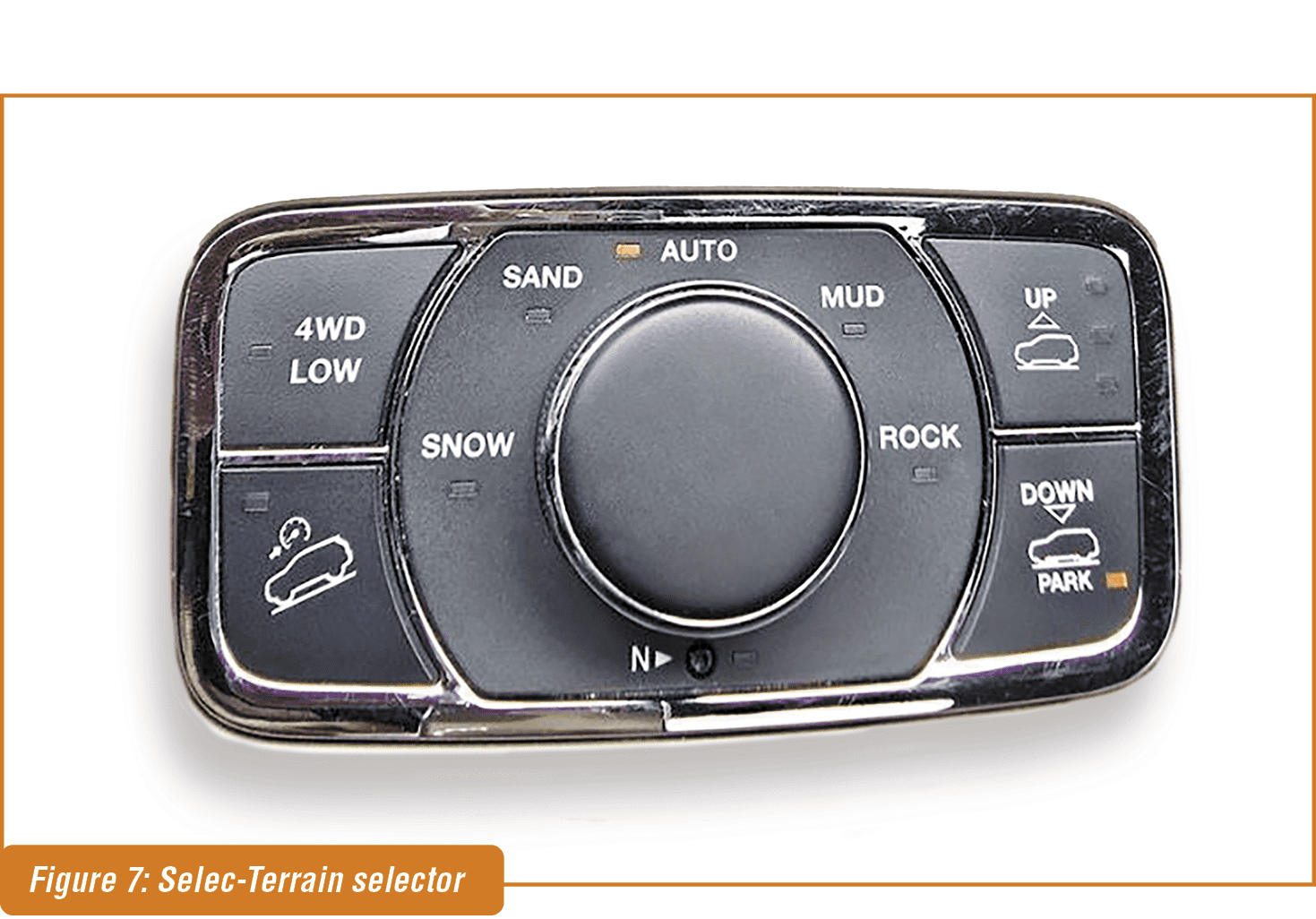 The transfer case and ELSD are again locked, with the transmission and ABS also set to off-road settings. The vehicle’s hill descent control is also engaged to maintain vehicle control over steep surfaces.
The transfer case and ELSD are again locked, with the transmission and ABS also set to off-road settings. The vehicle’s hill descent control is also engaged to maintain vehicle control over steep surfaces.
COMMON FAULTS
Like all modern vehicle systems, the Jeep Quadra-Lift system is not without some issues.
There have been various reports of the rear of the vehicle sitting lower than normal, particularly after off-road driving. Small rocks can get lodged within the folds of the air spring. These may rub and possibly rupture the spring, causing an air leak. Being a closed system, the system can only maintain air pressure before the reservoir is depleted, meaning issues may not be immediately apparent.
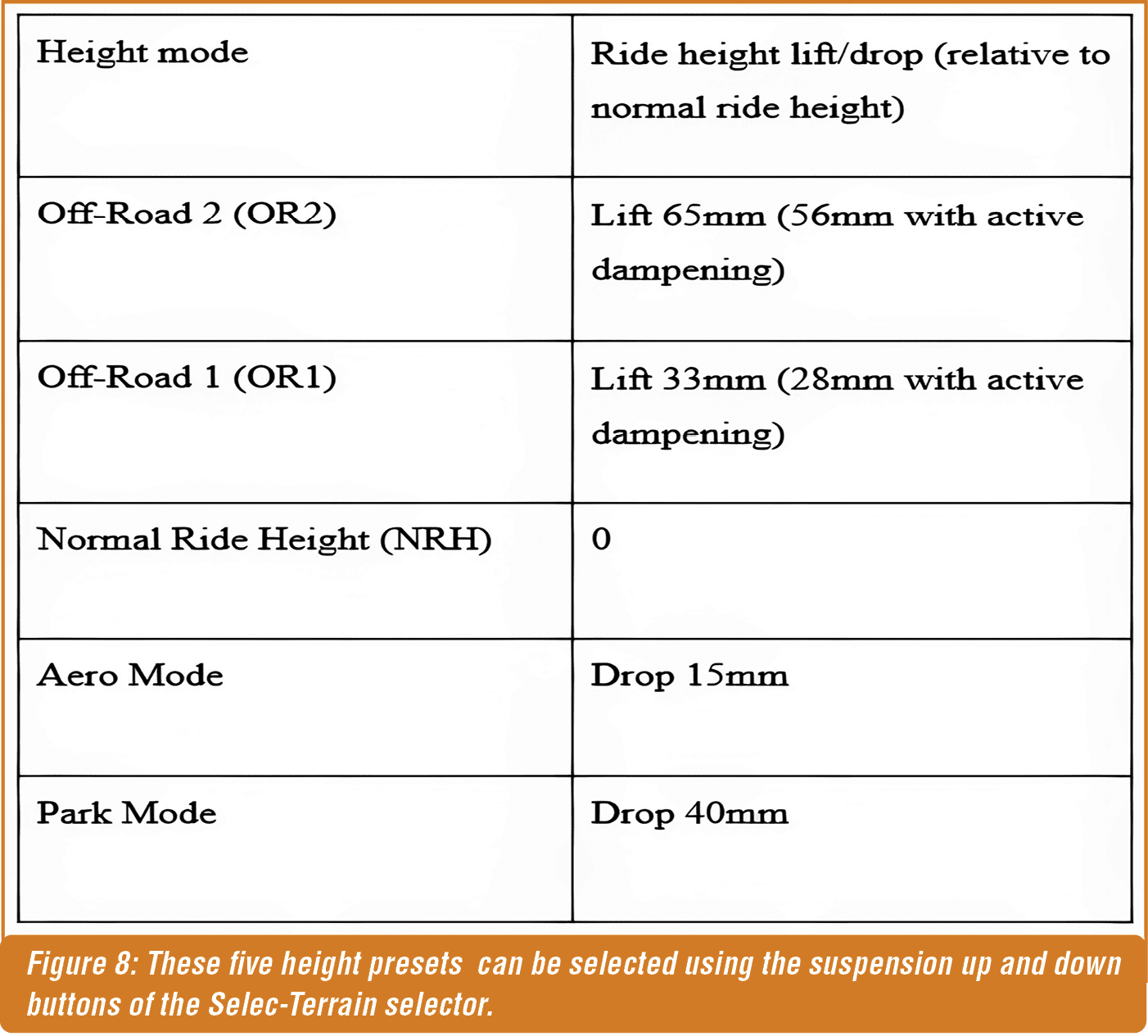 The compressor and valve body assembly can also be a common point of failure. Warning lights will generally indicate a failure; however, other signs may also be present, such as uneven ride height, excessive noise, or a lack of response when adjusting the ride height.
The compressor and valve body assembly can also be a common point of failure. Warning lights will generally indicate a failure; however, other signs may also be present, such as uneven ride height, excessive noise, or a lack of response when adjusting the ride height.
Compressor failure can onset from general wear and tear, as it is one of the few components with moving parts. However, a leaking air spring may accelerate compressor wear, as the system will attempt to maintain air pressure within and operate the compressor for longer than intended.
Basic wiring checks should also be carried out when diagnosing any potential faults in the system. Broken or shorted wires to both the compressor and/or the height sensors can occur.
For more information on the Jeep Grand Cherokee and other air suspension systems, log on to VACC MotorTech or call VACC’s TechAdvisory Service.
This article first appeared in the June 2025 issue of VACC’s TechTalk magazine. TechTalk has been in publication since 1986 and is an important feature of VACC membership and in all subscription levels of VACC MotorTech.


